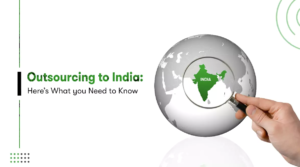Where are we now and where should we be headed?
As a precursor to the recently concluded G20 summit, the business forum B20 provided valuable inputs to the leadership to consider. Financial inclusion has been recognized as an enabler for 7 of the 17 Sustainable Development Goals. The G20 has committed to advance financial inclusion worldwide. It was indeed an honor for me to be a part of the ’B20 India Taskforce on Financial Inclusion’ representing Indo American Chamber of Commerce, India and also to provide our collective recommendations to the larger G20.
‘Financial inclusion’ or inclusive finance is when all adults above the age of 15 have effective access to and usage of savings, payments, credit, insurance, and investment services and products provided by financial institutions. It is when, regardless of their personal net worth or company size, financial products and services are made accessible and affordable to all individuals and businesses. This will eliminate the obstacles that exclude people from partaking in the financial sector and using these services to improve their lives. This inclusion could be for a specific region, gender, age, or a marginalized group.
One may ask, “Is there really a need? Aren’t everyone already using digital payments?”
The truth is that there is a dire need, especially in a developing country like India, where there is so much contrast that exists in finance. In the post pandemic world, the recovery has been faster for the economically better off groups, whereas the poor or the underserved have suffered even more.
According to the World Bank, 2 Billion adults worldwide have no access to formal financial services. There are millions of micro, small and medium-sized enterprises (MSMEs) who face difficulties in accessing finance even in the present day. 22 percent of adults in India remain unbanked (World Bank) till date.
There is a definite need to promote financial inclusion as it plays a key role in reducing socioeconomic inequalities. So, what is an effective access? Well, it’s not only the relevant products in accordance with needs, but also affordability and convenience. This requires providers to be accountable for market conduct and also the existence of effective financial consumer protection groups.
Key Drivers
Infrastructure: India is predominantly a cash-based economy and digital payments are only beginning to come into place. It was only in the last 10 years that a huge part of India’s population started a bank account even! There is a need for improvement of digital infrastructure in India. Inclusive finance is key for the country’s success and schemes like the government’s Digital India mission has to be lauded for sure.
Credit Access: Credit accessibility is another key factor in financial inclusion. Urban areas of India still have more access to this than rural India that has more informal credit sources. All geographical locations across India ought to have access to credit
Digital lending: Digital lenders can create various channels for the section of the population without credit access and back inclusive finance. Digital lenders are an affective force who can surpass geographical boundaries with pioneering solutions and swift loan approvals to allow customers in the rural areas have easier access to credit.
Technology and digitization: Technology and digitization will play an important role in financial inclusion. Digital solutions like UPI promote financial inclusion. The United Payments Interface (UPI) – a digital platform for cashless transactions – is a great example of technology boosting financial inclusion and for accelerating financial literacy.
It was great seeing Germany’s Federal Minister for Digital and Transport, Volker Wissing, using UPI to make a payment to a vegetable seller in India recently. Hailed as a success story, the Unified Payments Interface (UPI) is more common than ever today.
Way forward
Though great strides have been made towards financial inclusion in India, there is still a long way to go be it in terms of product, ecosystem and even the legal framework.
There is a need for more involvement by the private sector, especially in terms of new age financial institutions. A digital public infrastructure roll-out and capacity building through incubation and literacy can enhance digital and financial literacy and ensure a gender & diversity inclusive financial landscape in India. A reduction of cost of borrowing for the underserved is primary for financial products. Harnessing the power of business correspondents in financial inclusion and establishing a regulatory framework for SHGs as well as guidelines for fintech and primary co-operatives collaborations are needed. Also, there ought to be specific and targeted interventions for agricultural & rural segments, incentivizing cross-border payment innovations and increasing insurance, savings & wealth management penetration. Simultaneously, enhancing consumer protection and inclusive policy design & governance is also key.
According to RBI’s Financial Inclusion Index for 2022, from 53.9 in 2021 India has jumped to 56.4 across indices like access, usage and equality. The National Mission on Financial Inclusion like the Pradhan Mantri Jan Dhan Yojana has played a huge role in ensuring comprehensive financial inclusion and providing universal access to banking facilities across the nation. India has made significant progress but there is miles to go and the ’B20 India Taskforce on Financial Inclusion’ understands this and we hope to help India march towards a more financially inclusive nation.


